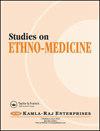Haemoglobinopathies: A Review on Statistical Modelling Perspective (Haemoglobinopathies: Statistical Modelling Techniques)
Q2 Social Sciences
引用次数: 0
Abstract
Haemoglobinopathies indicate a group of monogenic disorders. The prevalence of Haemoglobinopathies differs based on geographical regions and is higher in tropical countries. Literature has identified that Haemoglobinopathies are higher in tribal and ethnic groups compared to the general population in India. This narrative review explores the methods to analyse data related to Haemoglobinopathies, identifies the research gaps and gains insights on model building and prediction of Haemoglobinopathies. This narrative review includes articles focusing on Haemoglobinopathies, Anaemia and other related disorders, published from 2008 onwards. Full-text and accessible articles found in relevant databases were included. Statistical and a few other techniques like Logistic Regression, Bayesian Modelling, Genetic Risk Scoring, Structural Equation Modelling, Multilevel Tests, Longitudinal Models, Machine Learning Algorithms and Genotyping methods were used to know the risk of acquiring Haemoglobinopathies and to identify important genetic variants. From the findings, it was observed that many studies were conducted to identify the prevalence of Haemoglobinopathies among the general population, but only few in the tribal population. Models based on machine learning algorithms were used for prediction involving haematological parameters and genetic variants, whereas the statistical techniques for prediction include demographic, nutritional, economic, cultural and social indicators.血红蛋白病:统计建模视角综述(血红蛋白病:统计建模技术)
血红蛋白病是一组单基因疾病。血红蛋白病的发病率因地理区域而异,热带国家的发病率更高。文献发现,在印度,部落和少数民族群体中的血红蛋白病发病率高于普通人群。这篇叙述性综述探讨了分析血红蛋白病相关数据的方法,确定了研究缺口,并对血红蛋白病的模型建立和预测有了深入的了解。这篇叙述性综述收录了 2008 年以来发表的有关血红蛋白病、贫血及其他相关疾病的文章。在相关数据库中找到的可查阅全文的文章均被纳入其中。为了了解血红蛋白病的患病风险并确定重要的遗传变异,研究人员采用了统计和其他一些技术,如逻辑回归、贝叶斯模型、遗传风险评分、结构方程模型、多层次测试、纵向模型、机器学习算法和基因分型方法。研究结果表明,许多研究都是为了确定血红蛋白病在普通人群中的患病率,但在部落人群中的患病率却寥寥无几。基于机器学习算法的模型被用于涉及血液学参数和遗传变异的预测,而用于预测的统计技术包括人口、营养、经济、文化和社会指标。
本文章由计算机程序翻译,如有差异,请以英文原文为准。
求助全文
约1分钟内获得全文
求助全文
来源期刊

Studies on Ethno-Medicine
Social Sciences-Cultural Studies
CiteScore
0.50
自引率
0.00%
发文量
13
期刊介绍:
Studies on Ethno-Medicine is a peer reviewed, internationally circulated journal. It publishes reports of original research, theoretical articles, timely reviews, brief communications, book reviews and other publications in the interdisciplinary field of ethno-medicine. The journal serves as a forum for physical, social and life scientists as well as for health professionals. The transdisciplinary areas covered by this journal include, but are not limited to, Physical Sciences, Anthropology, Sociology, Geography, Life Sciences, Environmental Sciences, Botany, Agriculture, Home Science, Zoology, Genetics, Biology, Medical Sciences, Public Health, Demography and Epidemiology. The journal publishes basic, applied and methodologically oriented research from all such areas. The journal is committed to prompt review, and priority publication is given to manuscripts with novel or timely findings, and to manuscript of unusual interest. Further, the manuscripts are categorised under three types, namely - Regular articles, Short Communications and Reviews. The researchers are invited to submit original papers in English (papers published elsewhere or under consideration elsewhere shall not be considered).
 求助内容:
求助内容: 应助结果提醒方式:
应助结果提醒方式:


